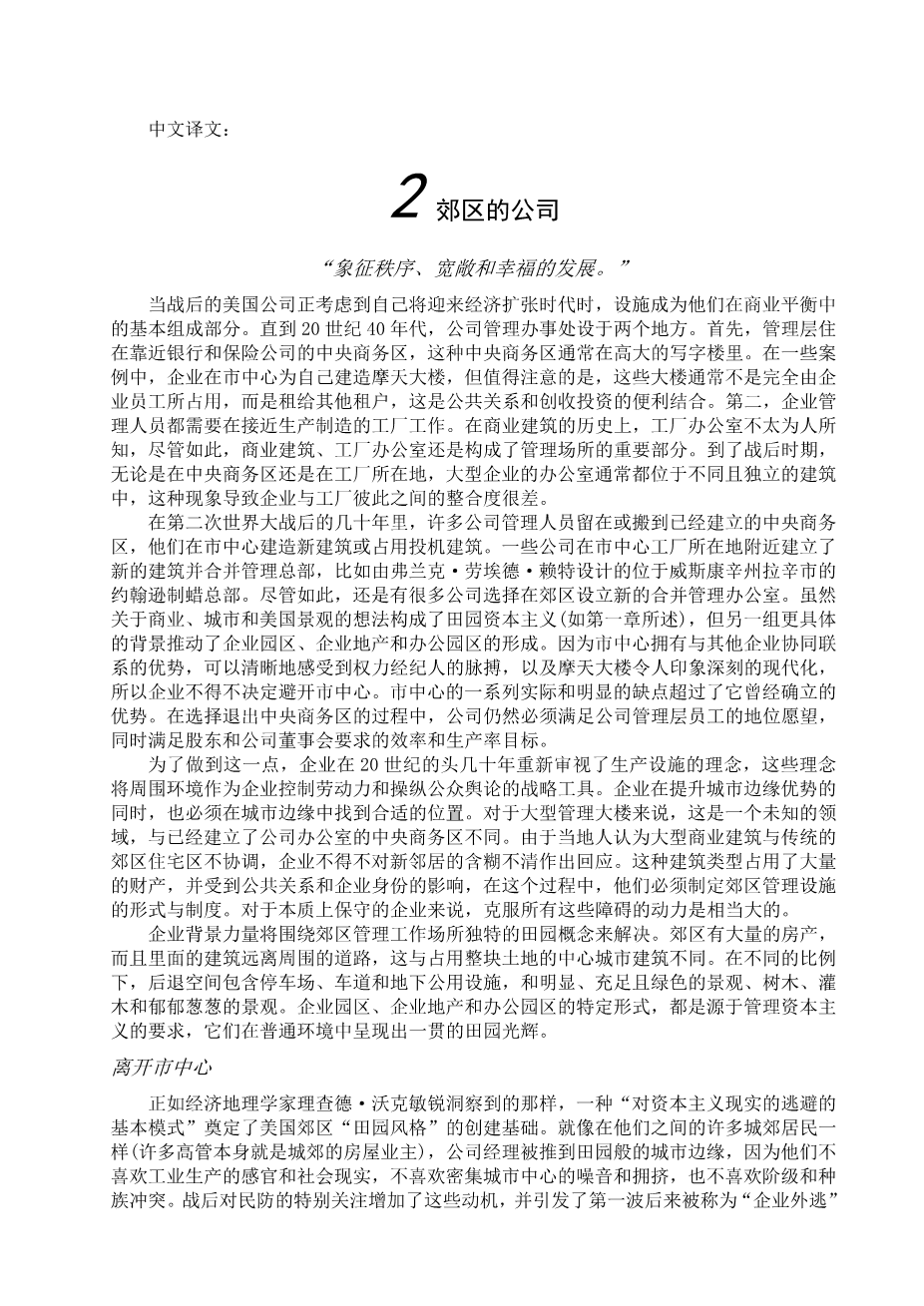2 THE CORPORATION IN THE SUBURBS
'A development that bespeaks orderliness,spaciousness, and well-being'
As postwar American corporations considered their futures in an expanding economic era, their facilities were a fundamental part of the business equation.Until the 1940s, corporate management offices had existed in two places. First,management resided in central business districts to be close to bankers and insurance companies, often in tall office buildings. In a few of those cases, corporations built downtown skyscrapers for themselves, but notably, the buildings were usually not entirely occupied by the corporate staffs but also rented to other tenants—a handy combination of public relations and income-generating in-vestment. Second, corporate management resided in manufacturing works, to be close to production. Less well known and less acknowledged in the history of business buildings, factory offices nonetheless constituted a substantive sector of management locations. By the postwar era, in both central business districts and factory sites, large corporate offices were often in various and separate buildings and poorly integrated with one another.
Many corporate management staffs remained in or relocated to established central business districts during the decades after World War II,building new downtown buildings or occupying speculative ones. Some built new, consolidated management headquarters near center city factory sites,such as the Johnson Wax headquarters in Racine, Wisconsin,designed by Frank Lloyd Wright. Nonetheless a significant set of companies chose the suburbs for new,consolidated management offices. While ideas about business, cities, and American landscapes framed pastoral capitalism (as discussed in chapter 1), another set of more specific contexts impelled the formation of corporate campuses, corporate estates, and office parks. Corporations had to decide to eschew the city center, which had the advantage of synergistic connectedness to other businesses, palpability of power brokers pulse, and the impressive modernity of skyscrapers.A range of actual and perceptual drawbacks of the city center trumped its once well-established advantages.In opting out of the central business district, corporations still had to address the status aspirations of the corporate management employees, while satisfying the goals of efficiency and productivity that their shareholders and corporate boards demanded.
To do so, corporations revisited ideas from production facilities in the first decades of the twentieth century that used the landscape surround as a strategic corporate tool to control labor and manipulate public opinion. As corporations promoted the advantages of the urban edge, they also had to find a suitable place within it. Unlike the central business district with established corporate offices,this was unknown territory for large management buildings.Corporations had to respond to the equivocation of their new neighbors since locals perceived large business buildings as incongruous with conventional residential suburbs.In the process, they had to invent the form of the suburban management facility,a new building type of significant size, occupying large tracts of property, and shaped by issues of public relations and corporate identity. For the inherently conservative corporate enterprise, the impetus to work through all these obstacles had to be considerable.
These contextual forces resolved around a distinct pastoral conception of the suburban management workplace. Unlike central city buildings occupying entire lots, properties were ample, and the buildings within them were set back from surrounding roads. In varying proportions,the setback contained parking, driveways, underground utility infrastructure, and an obvious,ample, verdant landscape of trees, shrubs, and lawn. The specific forms of the corporate campus, the corporate estate, and the office park that emerged from the imperatives of managerial capitalism share a consistently pastoral sheen that materialized from common circumstances.
Leaving the City Center
As the economic geographer Richard Walker has astutely discerned, a 'basic pattern of escapism from capitalist reality' underlay the creation of American suburbs with the 'Arcadian look.', Like many suburban dwellers before them(and many executives were themselves suburban home owners), corporate managers were propelled to the pastoral urban periphery by a distaste for the sensory and social realities of industrial production, the noise and congestion of dense urban cores,and class and ethnic conflicts. An exceptional concern of the postwar era,civil defense, added to these motives and incited the first wave of what came to be known as the corporate exodus.
Although the corporate exodus is commonly characterized as an abandonment of the central business district, the first corporations that built suburban workplaces exclusively for management relocated their personnel from factories. In the first decades of the twentieth century, industrial landscapes, once celebrated as emblems of progress and economic prowess, became symbols of manual labor and the working class (figure 2.1).3 The public health movement of the Progressive Era also identified factories as noxious, unhealthy environments.By the mid-twentieth century, corporations wanted to distance their management echelons from what they considered to be the unsavory social and physical situation of the manufacturing plants they controlled.
Thus, the initial sector of the corporate hierarchy to migrate to the suburbs was not the top echelon but rather middle management research divisions.Although scientists were ascendant in the managerial capitalist hierarchy, they worked at factory sites, a legacy of earlier industrial workshops attached to production facilities (discussed in detail in chapter 3). Companies such as A

资料编号:[265919],资料为PDF文档或Word文档,PDF文档可免费转换为Word
剩余内容已隐藏,支付完成后下载完整资料

英语译文共 11 页,剩余内容已隐藏,支付完成后下载完整资料
资料编号:[265919],资料为PDF文档或Word文档,PDF文档可免费转换为Word
原文和译文剩余内容已隐藏,您需要先支付 30元 才能查看原文和译文全部内容!立即支付


